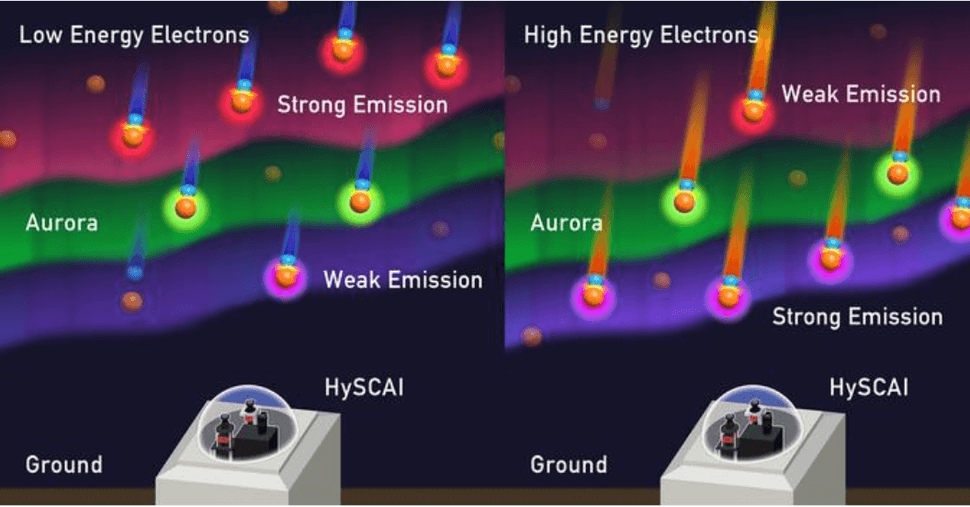A newly developed instrument shows Earth’s Northern Lights or the Aurora Borealis in a dazzling rainbow of colors.
There’s no shortage of images of Earth’s auroras, the Aurora Borealis or Aurora Australias, dazzling ribbons of lights that dance over our planet’s northern and southern hemispheres, respectively. Both amateur and professional astronomers photograph this dazzling phenomenon pretty much every time it makes an appearance.
But hyperspectral imaging of the aurora, well, now that’s a different beast.
Japan’s National Institute for Fusion Science (NIFS) has installed the ultra-sensitive Hyperspectral Camera (HySCAI) at the Swedish Space Center’s Kiruna Esrange Optical Platform Site (KEOPS) in Kiruna, Sweden, and it’s returned the first-ever hyperspectral images of the aurora.
A hyperspectral image is a two-dimensional image that’s broken down by wavelength (or color), which, in this case, allows researchers to study auroral emission in extraordinary detail. More specifically, they can measure the energy of incoming electrons that cause the aurora and cause specific colors to light up the night sky. Other forms of auroral imaging are filtered by wavelength but don’t produce such a comprehensive overview.
With HySCAI, researchers hope to “[solve] important auroral issues such as the distribution of precipitating electrons, their relationship to auroral color, and the mechanism of auroral emission,” according to a press release.
To create HySCAI, the NIFS researchers used technology developed for the Large Helical Device (LHD), the world’s largest superconducting plasma device, located at their lab in Toki, Gifu, Japan. In building the LHD, the team devised various imaging systems to observe light emitted from plasma in a magnetic field, with the goal of studying energy transport and atomic and molecular emission.
Related: Northern lights delight as ‘cannibal’ solar storm triggers auroras across US and Canada (photos)

Auroras are natural light shows sparked by charged particles from the sun, contained in the solar wind, hitting Earth’s magnetic field, the magnetosphere, and our planet’s thin atmosphere at high altitudes.
These particles collide with oxygen and nitrogen particles and energize them. The particles then shed this energy in the form of light, or electromagnetic radiation, that shines at characteristic wavelengths depending on the molecule emitting it.
That means a hyperspectral image of the Northern Lights can give a detailed picture of the composition of Earth’s atmosphere.
NIFS came up with the idea to adapt those systems for HySCAI in 2018 — the imaging system took five more years to develop fully, and it was installed at KEOPS in May 2023. HySCAI became operational in September 2023, and the team has published its research on the data in the journal Earth, Planets and Space.
With HySCAI, scientists the world over will be able to gain new insight into the mysterious aurora.